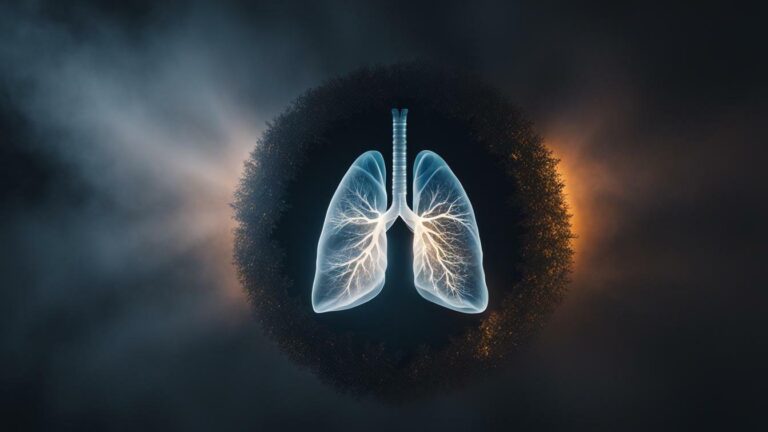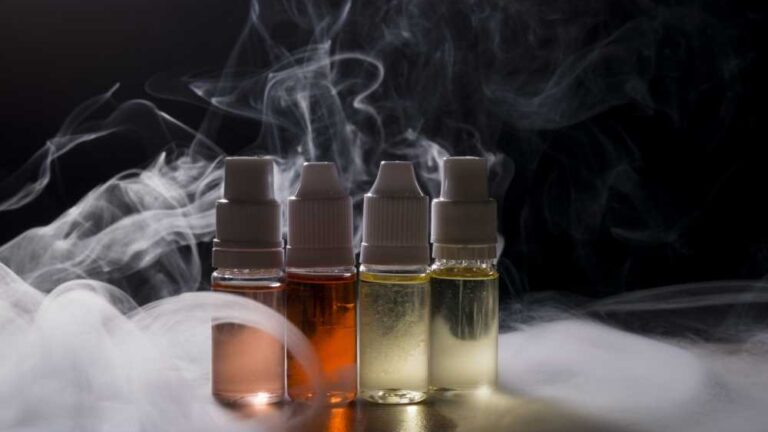
The Hidden Dangers of Vaping: Is Propylene Glycol Safe to Inhale?
Vaping has become a global phenomenon, often marketed as a safer alternative to smoking, but questions about its health impacts persist. At the heart of these concerns is propylene glycol (PG), a key ingredient in most e-liquids that delivers flavor and a satisfying throat hit. While PG is deemed safe for ingestion in food and cosmetics, its safety when inhaled through vaping is far from settled.
This article dives into is vaping ingredients propylene glycol bad for you, explores what chemicals are in vapes, and answers how many chemicals are found in vapes. By examining the latest research and expert insights, we’ll uncover the potential risks of propylene glycol in e-cigarettes and help you make informed choices about your vaping habits.
What is Propylene Glycol?
Propylene glycol (PG) is a synthetic, colorless, odorless liquid with a slightly sweet taste, belonging to the alcohol family. It’s widely used as a solvent, humectant, and preservative in products like food, cosmetics, pharmaceuticals, and even antifreeze. In vaping, PG serves as a base for e-liquids, alongside vegetable glycerin (VG), to:
- Carry Flavors: PG dissolves flavorings effectively, ensuring a consistent taste.
- Deliver Nicotine: It helps nicotine blend smoothly into the e-liquid.
- Provide Throat Hit: PG mimics the sensation of smoking, making it popular among ex-smokers.
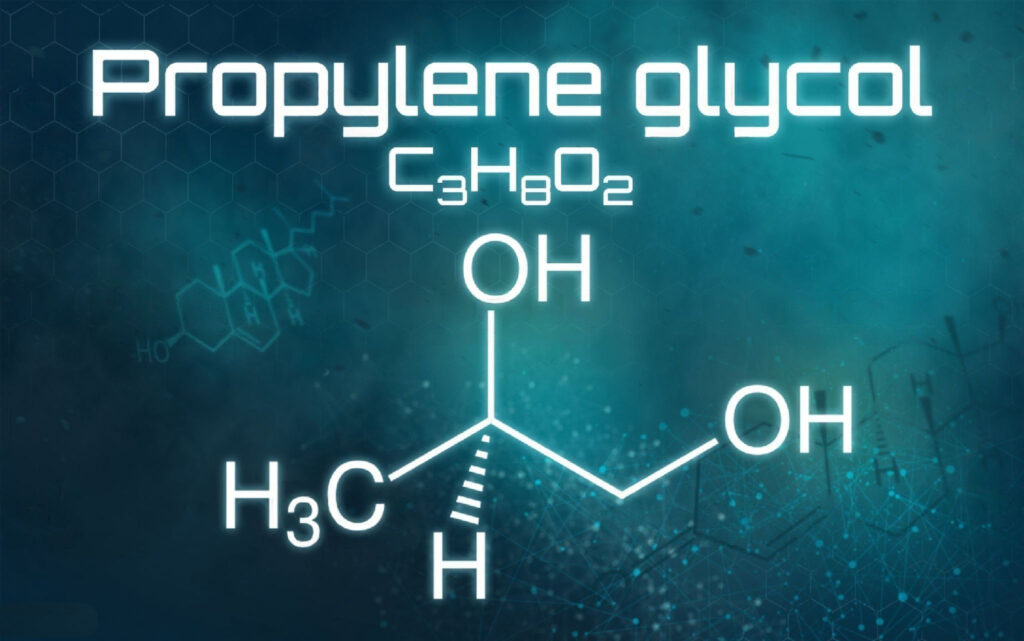
According to Pod Salt UK, PG’s ability to create a smooth vaping experience makes it a staple in e-liquids. However, while regulatory bodies like the U.S. Food and Drug Administration (FDA) and the European Union approve PG for ingestion and topical use, its safety when inhaled as a vapor is less clear.
What Chemicals Are in Vapes?
E-liquids contain a mix of ingredients designed to produce vapor and flavor. The primary components include:
| Chemical | Role | Potential Concerns |
|---|---|---|
| Propylene Glycol (PG) | Carries flavors and nicotine, provides throat hit | May cause respiratory irritation and inflammation when inhaled |
| Vegetable Glycerin (VG) | Produces thick vapor clouds | Can contribute to lung inflammation, though less irritating than PG |
| Flavorings | Add taste (e.g., fruit, dessert) | Some, like diacetyl, are linked to serious lung conditions (popcorn lung) |
| Nicotine (Optional) | Provides stimulant effects | Addictive, increases heart rate and blood pressure |
| Byproducts | Formed during heating (e.g., formaldehyde, acetaldehyde) | Known carcinogens, pose respiratory and cardiovascular risks |
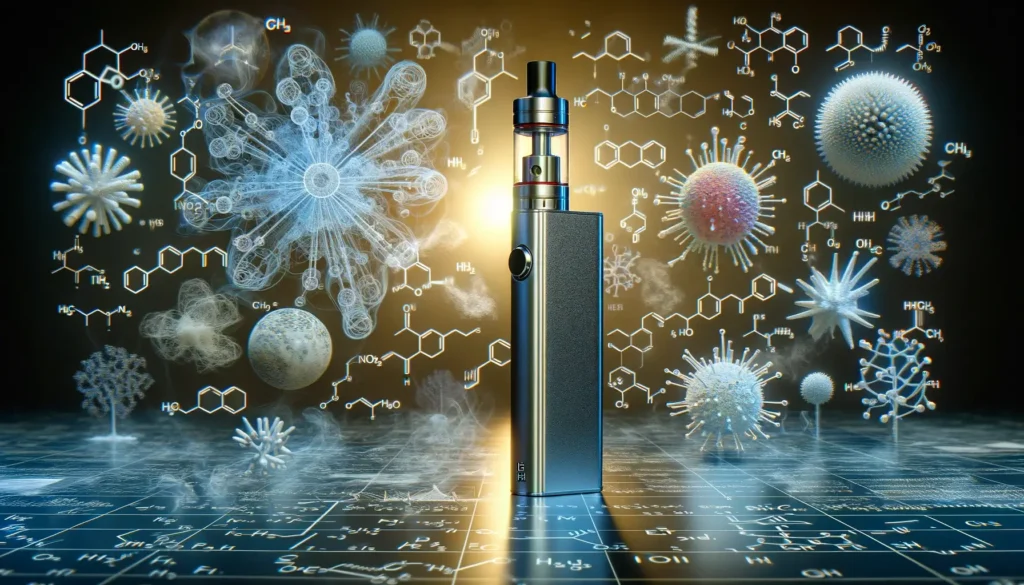
Studies, such as those by Herrington and Myers (2015), have identified 60-70 compounds in e-liquids, while Kucharska et al. (2016) found up to 113 chemicals across 50 brands. When heated, e-liquids can generate additional compounds, like formaldehyde and acrolein, increasing the complexity and potential risks of vaping, as noted in the National Academies of Sciences, Engineering, and Medicine report.
Is Vaping Propylene Glycol Bad for You?
The safety of propylene glycol in vape products is a contentious issue. While PG is safe for ingestion, inhaling it as a vapor raises concerns. Here’s what current research reveals:
Respiratory Irritation and Inflammation
- A 2022 study in Respiratory Research found that PG damages epithelial cells in human small airways, potentially impairing lung function and increasing infection risk.
- A 2019 study in Cancer Prevention Research reported that vaping PG and VG can cause lung inflammation over time, particularly in frequent users.
- Research from Nature (2024) showed that PG and VG aerosols induce airway inflammation and mucus hyperconcentration, which could worsen conditions like asthma or chronic obstructive pulmonary disease (COPD).
Formation of Harmful Byproducts
- When heated to high temperatures in vape devices, PG can break down into toxic compounds like formaldehyde and acetaldehyde, both known carcinogens. This thermal decomposition, highlighted by Endocannabinoid Medicine, increases the risk of respiratory and cardiovascular harm.
- The National Academies report notes that the aerosolization process creates additional chemicals not present in the original e-liquid, complicating safety assessments.
Individual Sensitivities
- Some vapers may experience allergic reactions to PG, such as throat irritation, coughing, or wheezing, as noted by Pod Salt UK.
- Individuals with pre-existing respiratory conditions, like asthma, may be more susceptible to PG’s effects, experiencing exacerbated symptoms.
Regulatory Uncertainty
- The FDA, UK Medicines and Healthcare products Regulatory Agency (MHRA), and European Union approve PG for ingestion and topical use, but not specifically for inhalation. The Agency for Toxic Substances and Disease Registry (ATSDR) emphasizes that inhalation safety is a separate matter, requiring further study.
- A 2010 study in the International Journal of Environmental Research and Public Health suggested PG is safe in low doses, but high-dose inhalation from vaping remains under-researched.
Historical Context
- A 1940s study cited on Quora found that vaporized PG protected mice from influenza, suggesting potential antimicrobial properties. However, this study is outdated and not directly relevant to modern vaping practices.
Propylene Glycol Vapor Side Effects
Inhaling propylene glycol vapor can lead to several side effects, particularly with prolonged or heavy use:
| Side Effect | Description |
|---|---|
| Respiratory Irritation | Coughing, wheezing, or throat discomfort, especially in sensitive individuals. |
| Lung Inflammation | Chronic inflammation that may worsen respiratory conditions like asthma or COPD. |
| Allergic Reactions | Symptoms like skin irritation, runny nose, or breathing difficulties in some users. |
| Toxic Byproducts | Formation of formaldehyde and acetaldehyde, linked to cancer and cardiovascular issues. |
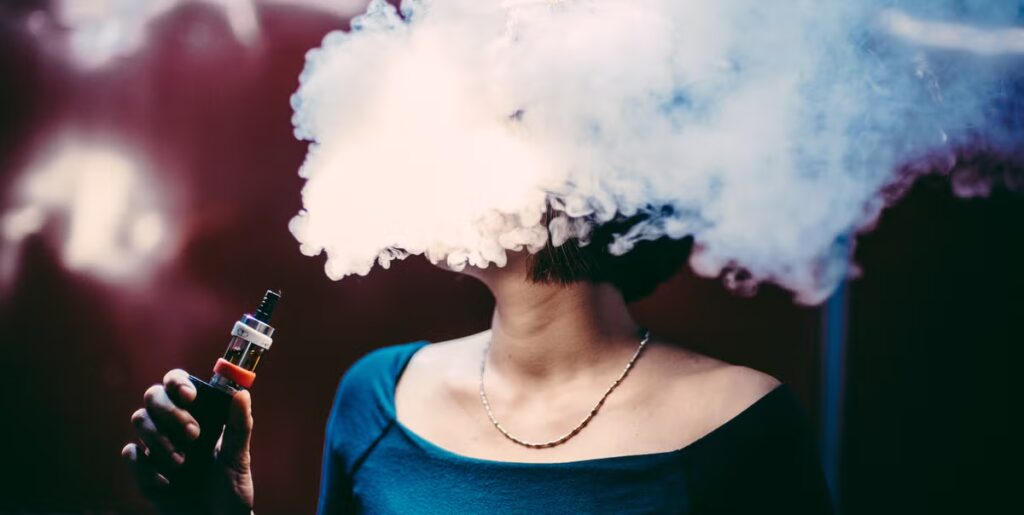
These side effects, reported in studies like those in Nature and Cancer Prevention Research, highlight the need for caution, especially for frequent vapers or those with lung conditions.
How Many Chemicals Are in Vapes?
The number of chemicals in vapes varies by brand and formulation. Research indicates:
- Herrington and Myers (2015): Identified 60-70 compounds in e-liquids, varying slightly by product.
- Kucharska et al. (2016): Found 113 chemicals across 50 e-liquid brands.
- Aerosolization Effects: Heating e-liquids can produce 18 or more additional compounds, such as formaldehyde, increasing exposure to potentially harmful substances.
This complexity, noted in the National Academies report, underscores the challenge of assessing vaping’s safety, as the full impact of these chemicals is still being studied.
Propylene Glycol in E-Cigarettes: Why It’s Used
In e-cigarettes, PG is prized for its ability to:
- Enhance Flavor Delivery: PG’s solvent properties ensure consistent flavor in every puff.
- Mimic Smoking: Its throat hit appeals to ex-smokers transitioning to vaping.
- Create Vapor: Combined with VG, PG contributes to the aerosol vapers inhale.
However, the heating process in e-cigarettes can alter PG’s chemical structure, producing harmful byproducts that raise health concerns, as discussed in Endocannabinoid Medicine.
Mitigating Risks: What You Can Do
If you’re concerned about is vaping propylene glycol bad for you, consider these steps:
- Choose High-Quality E-Liquids: Opt for products from reputable brands with transparent ingredient lists and lab testing.
- Use Higher VG Ratios: VG is less irritating than PG. Try e-liquids with a higher VG content (e.g., 70/30 VG/PG) to reduce exposure.
- Monitor Symptoms: Watch for signs of irritation, such as coughing or wheezing, and consult a healthcare provider if they persist.
- Limit Vaping Frequency: Reducing use can minimize exposure to PG and other chemicals.
- Stay Informed: Follow updates on vaping research to make evidence-based decisions.

Concluding Remarks
The question is vaping ingredients propylene glycol bad for you doesn’t have a simple answer. While PG is safe for ingestion and widely used in food and cosmetics, inhaling it through vaping may pose risks, including respiratory irritation, lung inflammation, and exposure to toxic byproducts like formaldehyde. The lack of long-term studies means the full extent of these risks is still unknown, particularly for heavy vapers or those with respiratory conditions. By choosing high-quality e-liquids, monitoring your health, and staying informed, you can make safer choices about vaping. If you’re concerned, consult a healthcare provider to discuss your vaping habits and their potential impact on your health.

